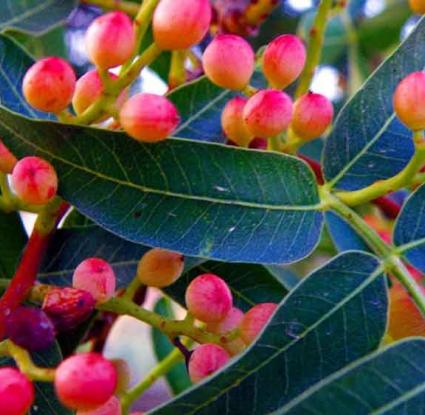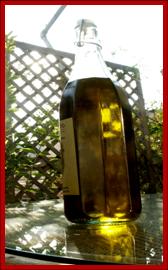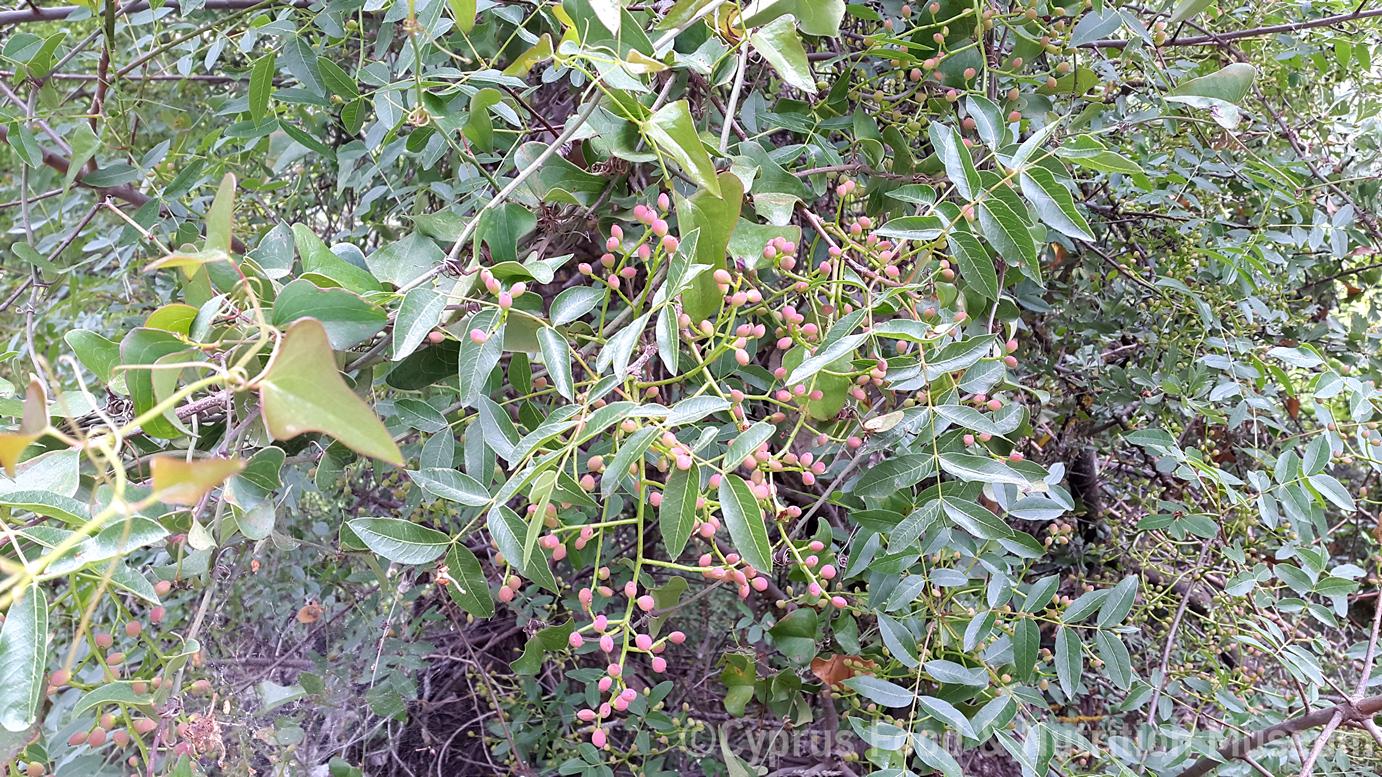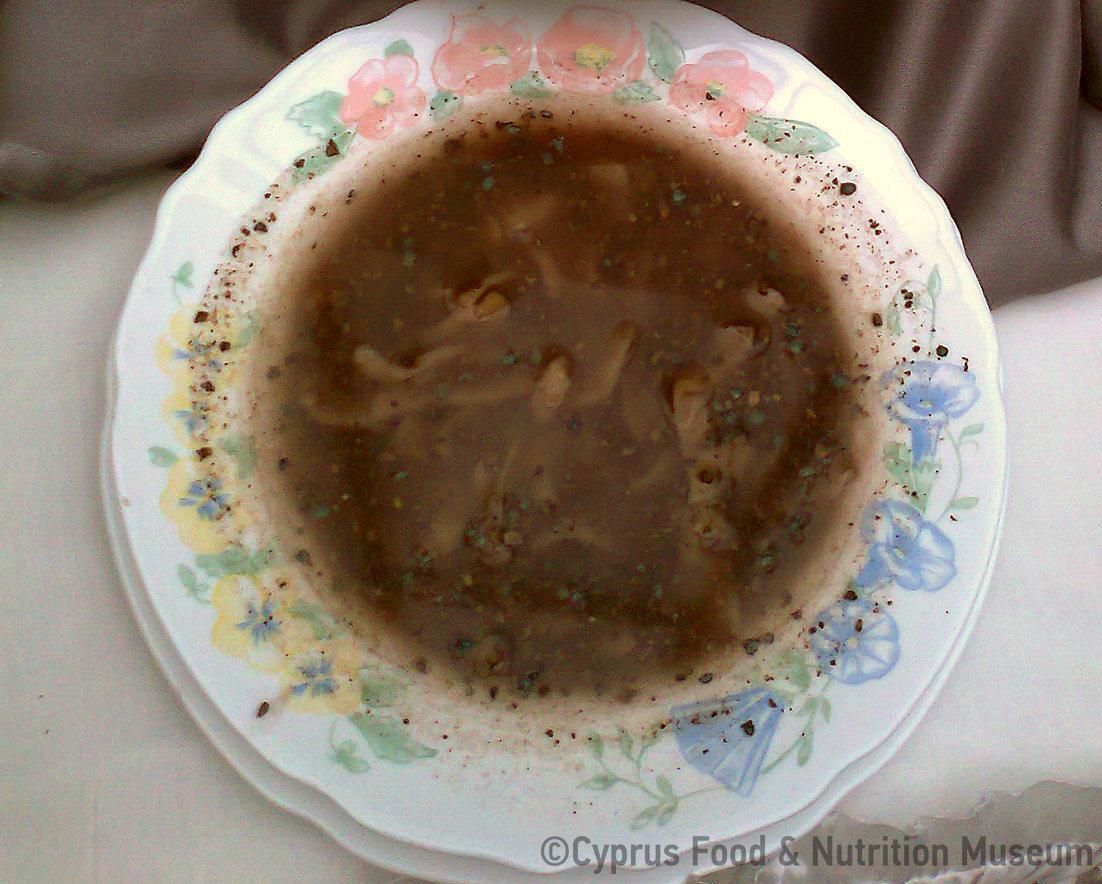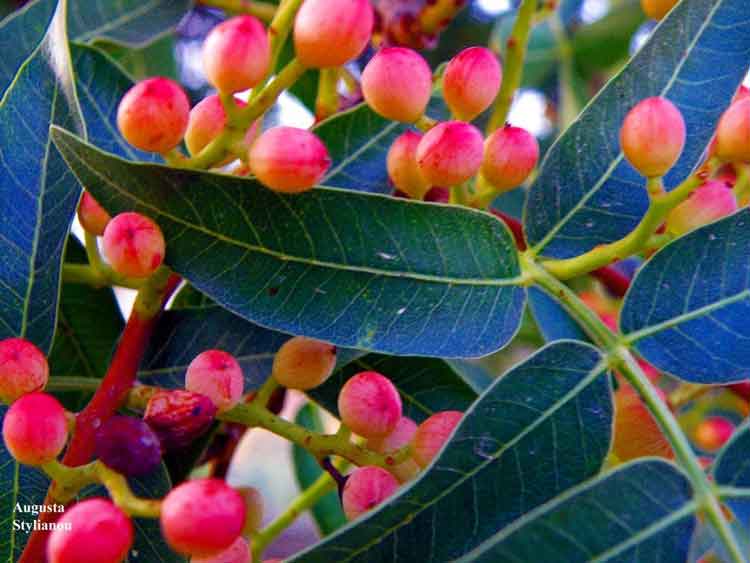Troumíthkia, the fruit of the terebinth tree, were consumed as salted nuts. Terebinth oil was used in cooking, in addition to its use as a lighting oil and for therapeutic purposes.
Name - Origin
Terebinth (Kypri 1979 [2002²], entry τρουμίθθιν,το, 480).
Tremithkiá is terebinth, also known as kokkorevithiá or tsikoudiá. Tremíthkia are the fruit of the terebinth tree, which belongs to the genus Pistacia and is native to the entire Mediterranean, as well as beyond the Mediterranean. In the greek island of Chios, the fruit (tremithkia) are consumed as nuts and are called 'tsíkouda' (testimony of Antonia Matala). Terebinth oil is extracted from the fruit of the tree.
Scientific name of the tree: Pistacia terebinthus L. Plural: troumithkiés. Large sized: troúmithos p. 231) The fruit is called troumíthin (plural: troumíthkia) (Kypri 1983 [2003²], entry τρουμιθκιά,η, 231).
Functional and symbolic role
The fruit is called troumithin, plural: troumíthkia. Troumíthkia were consumed as salted nuts. They were often roasted. The fruit was used to make terebinth oil, which in addition to its use as a lighting oil and as a therapeutic agent, it was used in cooking. Xenophon Pharmakidis notes that it is very tasty when used in frying but if it is used raw in salads, it is tasteless and almost disgusting (Kypri 1983 [2003²], entry τρουμιθκιά,η, 231).
Tremithopitta (pitta-pie) was made with themíthkia. Tremíthkia were also consumed fresh or as nuts when dried and salted. Finally, the tender shoots were collected and consumed either fresh or fried with eggs. Some households used to preserve the shoots in vinegar, a preservation method that has been used since ancient times (Hadjikyriakou, 2011).
Additional information and bibliography
Tremíthkia were abundant in Palaichori village when ground and added to bread dough and pies along with raisins. They were also added to soups for their oil (Psilita Ioannou 2010, 59). According to a testimony of a resident of Palaichori, the tar of the terebinth tree was used to make medicine for wounds. “My grandfather, Stylianos Pontikos, used to make a medicine for wounds. He used to call it Apostoliko because he would add 12 ingredients, the most important of which was the tar of the terebinth tree. The initial letter of the tar in Greek is P which represented Apostle Peter” (Psilita Ioannou 2010, 152).
Terebinth resin is the raw material of terebinthin, commonly known as ‘néfti’ in Cyprus. This resin is also used to make pissa Paphitiki (a gum).
Yangoullis K. G. (2009), Θησαυρός Κυπριακής Διαλέκτου. Ερμηνευτικό, Ετυμολογικό, Φρασεολογικό και Ονοματολογικό Λεξικό της Μεσαιωνικής και Νεότερης Κυπριακής Διαλέκτου, Βιβλιοθήκη Κυπρίων Λαϊκών Ποιητών,70, Theopress Publications, Nicosia.
Kypri Th. D. (ed.) (1979 [2002²]), Υλικά διά την σύνταξιν ιστορικού λεξικού της κυπριακής διαλέκτου, Μέρος Α΄, Γλωσσάριον Γεωργίου Λουκά, Publications of the Centre for Scientific Research, XLI, Nicosia.
Kypri Th. D. (ed.) (1983 [2003²]), Υλικά διά την σύνταξιν ιστορικού λεξικού της κυπριακής διαλέκτου, Μέρος Β΄, Γλωσσάριον Ξενοφώντος Π. Φαρμακίδου, Publications of the Centre for Scientific Research, IX, Nicosia.
Hadjikyriakou N. G. (2011), Αρωματικά και αρτυματικά φυτά στην Κύπρο. Από την Αρχαιότητα μέχρι Σήμερα, Bank of Cyprus Cultural Foundation, Nicosia.
Psilita-Ioannou P. (2010), Παλαιχώρι: Ιστορία και Πολιτισμός, Platypus Press, Athens.
Antonia Matala, Demetra Demetriou, Stalo Lazarou, Savvas Polyviou, Argyro Xenophontos

